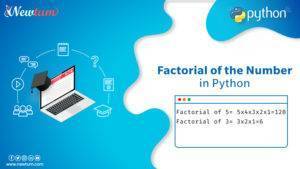Are you new to coding and curious about how you can create your own basic calculator using the C programming language? You’re in the right place! Today we’re diving into a fun and practical exercise: a C Program to make simple calculator using switch case. This method is an essential stepping stone for beginners venturing into the world of programming. You’ll not only get familiar with the logic behind basic calculations but also learn how to handle user inputs and control the flow using switch case. Keep reading to unlock the power of simple programming in an engaging way!
Code Example: C Program to Create a Simple Calculator Using Switch Case
c
#include
int main() {
char operator;
double num1, num2, result = 0.0;
printf("Enter an operator (+, -, *, /): ");
scanf("%c", &operator);
printf("Enter two operands: ");
scanf("%lf %lf", &num1, &num2);
switch(operator) {
case '+':
result = num1 + num2;
break;
case '-':
result = num1 - num2;
break;
case '*':
result = num1 * num2;
break;
case '/':
if(num2 != 0) {
result = num1 / num2;
} else {
printf("Error! Division by zero.
");
return 1;
}
break;
default:
printf("Error! Invalid operator.
");
return 1;
}
printf("%.2lf %c %.2lf = %.2lf
", num1, operator, num2, result);
return 0;
}
Explanation of the Code
Let’s break down the `C Program to make simple calculator using switch case` line by line, so that even if you’re just starting out, you get it!
- First, we include the standard input-output header file with `#include `. This allows us to use functions like `printf` and `scanf`.
- Next, we declare a `main` function, the starting point of our C program.
- Inside `main`, we declare variables: a `char` for the operator, and two `double` types (`num1`, `num2`) to store the numbers we’ll calculate with. We also initialize `result` to `0.0`.
- We prompt the user to enter an operator using `printf` and read the input with `scanf`.
- A prompt follows for two numbers, filling `num1` and `num2`.
- The `switch` statement then evaluates the operator. Depending on the character, it performs addition, subtraction, multiplication, or division.
- Error handling is built-in for division by zero and invalid operators.
- Finally, the result is printed if everything was input correctly.
Output
Enter an operator (+, -, *, /):
Enter two operands:
2.00 + 3.00 = 5.00
Real-Life Uses of a Simple Calculator Program in C
Let’s dive into some practical real-life scenarios where companies or brands could use a ‘C Program to make simple calculator using switch case’!
- Employee Productivity Tool: Companies often need simple tools for their employees to perform quick calculations. Imagine a payroll department using a C program as a calculator to calculate bonuses, overtime, or deductions based on various criteria. Having a tailored calculator assists in speeding up these routine tasks.
- Educational Software: Educational institutions may develop learning software that includes simple calculators for teaching concepts like addition and subtraction in mathematics. A ‘C Program to make simple calculator using switch case’ is easily integrated into educational tools, allowing children to interact with and understand math operations in a fun way.
- Inventory Management: Small businesses might create management software that includes embedded calculators to perform basic arithmetic for handling inventory and stock-related calculations. Imagine a local shop owner using a program to quickly sum up items in stock or calculate product requirements for restocking. This cuts down on errors and manual calculations.
- POS Systems: Point-of-sale systems in retail environments often include embedded calculators for quickly totaling bills, applying discounts, or calculating taxes. A ‘C Program to make simple calculator using switch case’ acts as a backbone in such systems, providing reliable and quick processing right at the checkout counters.
- Budget Planning for Events: Event management companies could utilize a simple calculator developed in C to quickly plan budgets, allocate resources, and calculate expenses. This makes the planning phase more efficient, enabling quick adjustments based on client needs or unforeseen changes.
These scenarios illustrate how a ‘C Program to make simple calculator using switch case’ can be adapted to fit diverse needs across various domains.
Test Your Knowledge: Quiz on C Program for Simple Calculator Using Switch Case
- What is the primary purpose of a switch case in a C program?
a) To iterate through a list
b) To execute one block of code
c) To turn on a light
- In a C Program to make simple calculator using switch case, what role does ‘case’ serve?
a) It serves as a conditional statement
b) It defines unique choices
c) It stores values permanently
- Which keyword is used to exit a switch case once a case is executed?
a) exit
b) end
c) break
- Which arithmetic operations can be implemented in a simple calculator program?
a) Only addition and subtraction
b) Division and multiplication
c) Addition, subtraction, multiplication, and division
- What happens if none of the cases match in a switch statement?
a) The program executes a default case
b) The program stops
c) The program gives an error
Our AI-powered ‘c’ compiler is designed to make coding seamless and efficient. Users can instantly write, run, and test code effortlessly. With our c online compiler, experience real-time feedback and enhance your coding skills quickly and effectively. Try it today!
Conclusion
Creating a ‘C Program to make simple calculator using switch case’ is a great stepping stone into coding! Ready for more? Explore advanced concepts and tutorials at Newtum. Don’t stop now—dive deeper into programming. Share your thoughts or ask questions in the comments!
Edited and Compiled by
This blog was compiled and edited by @rasika-deshpande, who has over 4 years of experience in writing. She’s passionate about helping beginners understand technical topics in a more interactive way.



